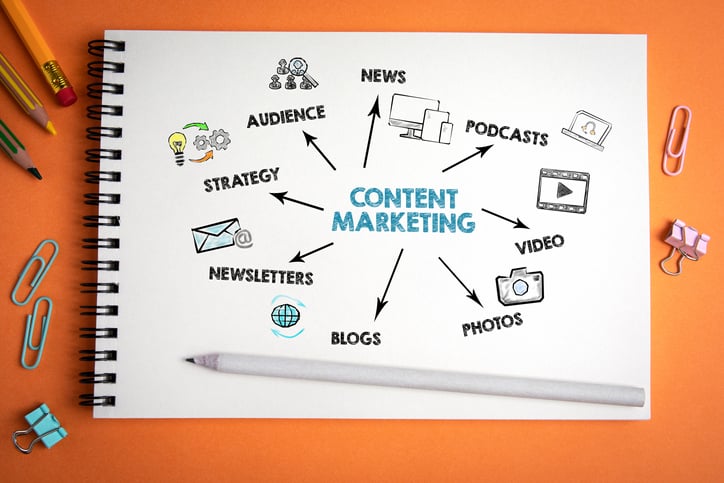Are you curious about the benefits of Facebook advertising? Wondering if a social media platform is the right place to invest your marketing budget?
Consider one simple fact. In 2017, Facebook’s monthly traffic grew to 2 billion active users. It’s a pretty safe bet that this huge audience includes a large portion of your target customers. So, what are you doing to reach them?
Many small business owners try running ads once or twice, struggle to get results and throw in the towel. If you want to learn how to use Facebook ads, approach the site like a data scientist. Just about any business can generate more sales through Facebook, but getting conversions takes a lot of testing and tweaking.
The key is to understand how customers think at different stages of your sales funnel and create an appropriate call to action. Make your marketing strategy more effective with these tips for how to use Facebook ads.
Set realistic goals for ad campaigns
Facebook isn’t a search engine where people specifically look for products and information. They show up to connect, share content, and see what their friends are interested in. Roughly 800 million users like content on Facebook every day, according to Facebook Newsroom. And more than one billion connect in Groups every month. Facebook is a place to study and engage your customers, so aggressive selling isn’t the way to go.
Few customers are going to click on ads from an unknown business and instantly spend $50. Instead, think of social media advertising as a way to warm up cold leads. To succeed at Facebook marketing, create a campaign for each individual goal, and set realistic expectations. Start by deciding, “What is the simplest thing I can ask customers to do?” For example:
- Learn about your brand
- View a video
- Like or share a post
- Subscribe to a list
- Visit your website or landing page
- Visit a physical store
- Browse an online catalog
- Install an app
- Download a report
Keep in mind, you’re more likely to be successful with a low-risk call to action. Getting people to sign up for something is a lot easier than persuading them to spend money. Of course, making money is the end goal, no matter the call to action. But it’s better to reserve sales-driven ads for people who have already engaged with your content.
Improve your targeting model
Save time and money by targeting niche groups of people. Showing ads to a large audience raises the cost per click, so it’s better to limit who you target. Facebook has a leg up on the competition because users literally give away personal information. The platform also tracks user behavior to offer precise data about their interests and lifestyles. Here are some of the best targeting options for small business.
- Location: If your business is local, only display ads to users in your state, city, or surrounding region. Location-based targeting is a great way to drive traffic to a store or event.
- Interests: You can target users based on specific content, businesses, or topics they follow. Facebook suggests related interests based on your search terms.
- Behavior: Facebook uses complex metrics to track common behavior leading up to a purchase. That way you can customize ads for people who are actively shopping for relevant products or services.
- Demographic: The platform offers several types of demographical targeting, including age, gender, income, marital status, and education. Let’s say you sell children’s products. You can tailor everyday ads to parents and create seasonal campaigns for grandparents.
Retarget past website visitors
Use the Custom Audiences tool to recapture traffic that got away. With this feature activated, your site uses tracking cookies to save data about the pages a user visits. When a visitor doesn’t complete the action you’re hoping for, you can retarget ads to drive them back to your site. Based on pages they viewed, you can figure out what info or products are most relevant to their needs. Retargeting helps you get leads that would otherwise be difficult to identify.
Lead with visuals
Facebook is a highly visual platform, and ads are restricted to about 20 percent text. Users quickly scroll through newsfeeds and group threads, only stopping when they see something interesting. Great Facebook ads need a strong visual element that screams “pay attention to me.” Most users watch Facebook videos without sound, so it’s essential to get your message across in a few seconds.
Whether you go with a video or image, visuals should:
- Tell the whole story without words
- Convey an action or emotion
- Provoke a response in the viewer
Imagine selling phone cases with an ad about the worst smartphone disasters. A funny visual of a phone getting destroyed evokes humor and empathy. It also plays upon fear, giving viewers a clear reason to take action.
Hook readers with a great selling point
Use what you know about customers to craft a compelling headline and body text. Ask yourself, “What do I hope to achieve by getting users to perform a specific action?” Common objectives might include:
- Introducing your brand to more people
- Building buzz for an upcoming event or sale
- Converting prospects into paying customers
Now think about what conditions would motivate customers to take the desired action. Similar to your visuals, ad copy should have a sense of relevance, urgency, and emotion. A struggling business owner might click on the ad “Earn a Six-Figure Salary From Your Side Gig in 5 Easy Steps.”
If you’re ready to make a sale, hook readers with a low-cost offer. Even if you sell expensive or intangible products, such as consulting services, get your foot in the door with a low starting offer. Fiverr is the perfect example of low-risk introductory packages. Sellers attract buyers with a $5 to $20 basic package and charge pro rates for add-ons and higher quality services.
Conduct A/B testing
Facebook makes the ad game ultra-simplified for beginners. In each ad set, you can use an existing ad to create a similar one. What’s the point, you ask? Running similar ads with minor changes allows you to test the effectiveness of different models. This process is known as A/B testing, and it works best when you change one variable at a time.
Let’s say you’re running ads for a summer sale on camping gear. You might choose an image of a family setting up camp to attract parents planning a summer trip. In another ad, you might use an image of the family hiking or rafting. The excitement factor of the second at might get more results, letting you know which ad is a good investment. In another test, you could tweak the body copy and headline or use a different call to action.
Experiment, measure, and experiment again
Fortunately, the Facebook platform self-corrects and offers suggestions to help optimize your campaigns. You can also add custom metrics that are appropriate for your type of business. When learning how to use Facebook ads, the more you test, the better you get at monetizing your advertising model.
Although it would be convenient, you can’t just pack up a successful ad strategy and deploy it as-is on any platform. Facebook users like an uninterrupted experienced, and they get tired of staring at the same ads again and again. For consistent gains, you have to be okay with auditing your campaign strategy on a routine basis.
Using Facebook to drive website traffic? Make sure your site is professional and engaging with these 4 tips.







